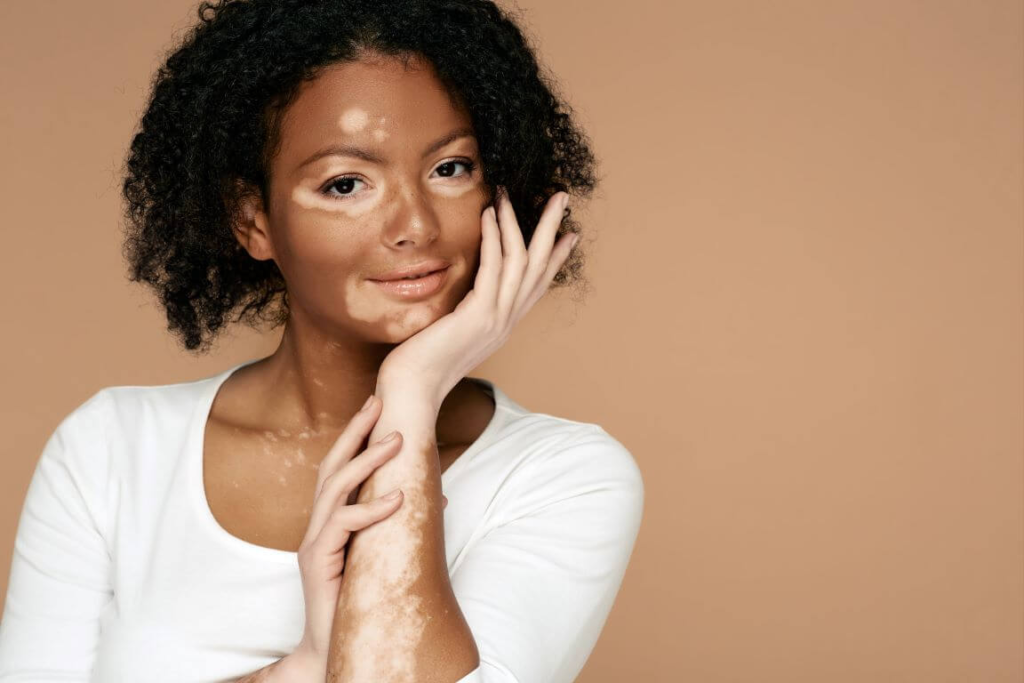
Table of Contents
- Introduction: Beyond the Skin
- What Is Vitiligo?
- Myth #1: Vitiligo Is Contagious
- Myth #2: Vitiligo Only Affects People with Dark Skin
- Myth #3: It’s Caused by Poor Hygiene
- Myth #4: Vitiligo Is Just a Cosmetic Issue
- Myth #5: Vitiligo Can Be Cured with Home Remedies
- Fact Check: What Science Really Says
- Emotional Impact: The Invisible Struggles
- Building Awareness: How We Can Help
- Final Thoughts: From Myths to Mindfulness
1. Introduction: Beyond the Skin
Vitiligo isn’t just a condition—it’s a story told on the canvas of the skin. As pale patches replace pigment, so too does misunderstanding replace facts. This blog seeks to illuminate truth and chase away the shadows of myth. It’s time to see vitiligo not as a flaw, but as a facet of human diversity.
2. What Is Vitiligo?
Vitiligo is an autoimmune condition where the body’s own immune system attacks melanocytes, the cells responsible for skin pigmentation. This results in white patches that can appear anywhere on the body, including hair and eyes. It affects people of all races, ages, and genders.
3. Myth #1: Vitiligo Is Contagious
The Truth:
Vitiligo is not contagious. You cannot catch it by touching, hugging, or being around someone who has it. The myth persists due to lack of awareness and visible symptoms, but the reality is rooted in genetics and autoimmunity, not transmission.
4. Myth #2: Vitiligo Only Affects People with Dark Skin
The Truth:
Vitiligo affects all skin tones. While it’s more visibly noticeable in darker-skinned individuals, it occurs across all ethnic groups. Every person with vitiligo has a unique pattern of pigment loss that doesn’t discriminate based on skin color.
5. Myth #3: It’s Caused by Poor Hygiene
The Truth:
Hygiene has no connection with vitiligo. This myth is not only false but harmful, often leading to stigma. Cleanliness does not affect the presence or progression of the condition.
6. Myth #4: Vitiligo Is Just a Cosmetic Issue
The Truth:
Though vitiligo manifests physically, its impact runs deeper. Emotional challenges, self-esteem issues, and social anxiety are common among those living with it. It’s a dermatological condition with psychosocial dimensions.
7. Myth #5: Vitiligo Can Be Cured with Home Remedies
The Truth:
There is no guaranteed cure for vitiligo. While some treatments (like topical steroids, light therapy, or surgery) can help manage the condition, home remedies lack scientific backing. Herbal ointments and DIY tricks often raise false hope and can even irritate the skin.
8. Fact Check: What Science Really Says
- Vitiligo is autoimmune in nature.
- It may be linked to genetic predisposition.
- Stress and trauma can sometimes trigger or worsen it.
- Modern treatments focus on halting the progression and restoring pigmentation.
- Ongoing research is exploring gene therapy, melanocyte transplantation, and biologics for better management.
9. Emotional Impact: The Invisible Struggles
Behind the visible patches lie stories of isolation, bullying, and mental health struggles. For many, the hardest battle is not against the condition, but against societal perceptions. Support groups, therapy, and awareness are essential tools for healing beyond the skin.
10. Building Awareness: How We Can Help
- Speak up against myths and discrimination.
- Educate yourself and others with facts.
- Celebrate diversity in appearance.
- Support vitiligo awareness initiatives and days like World Vitiligo Day (June 25).
- Highlight positive representation in media.
11. Final Thoughts: From Myths to Mindfulness
Vitiligo is not a curse, not a flaw, not a contagious disease—it is a condition, and those who have it are not broken. Shedding myths is the first step to embracing facts. With compassion and clarity, we can change the narrative—one truth at a time.

